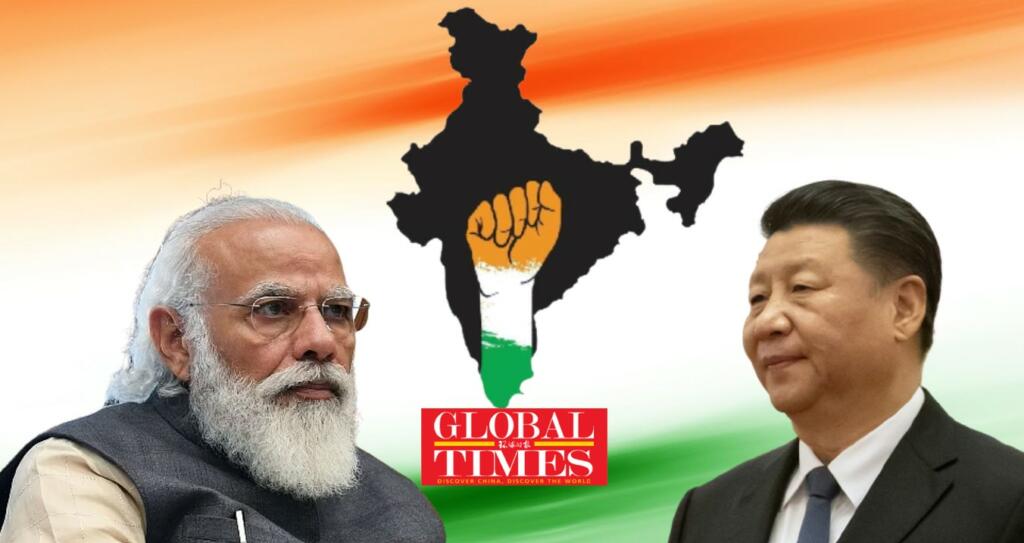After unleashing a deadly pandemic upon entire humanity and repeatedly ratcheting up the border issue with India along the LAC– China received a telling blow from India on the economic front in the highly lucrative Diwali festive season. Annoyed by not getting the share of the pie, Xi Jinping through his mouthpiece Global times has now ranted that India’s Make-in-India campaign is a flop.
The tabloid magazine remarked, “The Modi government has been promoting its Made-in-India campaign for many years but has failed to deliver. And, New Delhi’s so-called economic decoupling approach has been proved futile. In contrast, the Chinese market has kept its door open to the world, including Indian companies.”
A loss of Rs 50,000 crore to China in Diwali: CAIT
As reported by TFI, the Confederation of All India Traders (CAIT), a non-governmental trade association and advocacy group which represents more than 7 crores Indian business personnel reported that Indians’ Diwali shopping broke the last 10 years’ sales record and hurt the Chinese businesses.
According to the body, Indians bought more than 1.25 lakh crore worth of goods from the festival market. Gold jewellery accounted for more than Rs 9,000 crore of sales this year, while Rs 15,000 crores were spent on packaging commodities.
Read More: India smashes China with Diwali sales in two big ways
Moreover, this time, items such as earthen lamps, candles, paper mache lamps, sweets, dry fruits, footwear, watches, toys, home décor, and fashion clothing saw a huge uptick in their demand.
The sale of these products proved to be a boon for Indian small potters, craftsmen, and handicraftsmen who were earlier incurring heavy losses due to huge Chinese imports on Diwali.
The huge rise in the sale of made-in-India products made a dent in the Chinese’ pockets as Chinese businesses suffered a heavy loss of more than Rs 50,000 crores in this year’s festival.
According to a report by Hindustan Times, India imports more than 70,000 crores of Chinese goods during the period from holy Rakshabanshan to New Year. However, during the Rakshabandhan this year, the Chinese suffered a loss of more than Rs 5,000 crores while a loss of more than 500 crores was registered by them during Ganesh Chaturthi this year.
Global Times still nursing old wounds:
Moreover, a year after India boycotted the hara-kiri Regional Comprehensive Economic Partnership (RCEP), China is still nursing the wounds. It brought RCEP into the conversation and once again egged India to join the group.
The rant from GT read, “Holding onto a long-cherished dream of becoming a leading power in the world, India has chosen a reckless approach of cutting engagement with China, even turning its back to regional free trade agreements in which China plays a prominent role, such as the Regional Comprehensive Economic Partnership (RCEP)”
It further added, “Under these circumstances, it would be the most sensible path for India to join the regional trade pact and help enhance its own production capacity if New Delhi aspires to have a say in the global value chain.”
India effectively brought the end of RCEP:
Reported extensively by TFI, RCEP potentially includes more than 2.2 billion people or 30% of the world’s population, and a combined GDP of about $26.2 trillion, accounting for about 40 percent of world trade.
However, India’s decision to not join RCEP has reduced the potential impact of RCEP significantly. The Dragon has realized that it cannot move ahead without India and that the RCEP is a dead deal without New Delhi.
Read More: India killed RCEP and hence killed China’s dreams of trade deals with the rest of the world
One should understand that India had opted out of RCEP negotiations due to the concerns of domestic businesses about the trade agreement. Moreover, India already has FTA’s with ASEAN nations, Japan, and Korea. We do not need an FTA with China, for obvious reasons that the country would become a dumping yard for Chinese goods.
India still has a long way to go before it can completely clear the trade imbalance between the two nations. However, the make-in-India campaign is steadily making progress. And if Gt’s rant is anything to go by, the initiative is indeed making the right headways.
